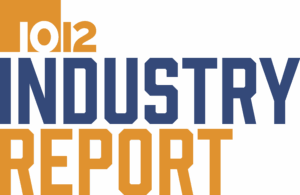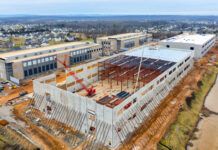
Digitization and advances in AI and machine learning, or ML, are transforming Louisiana’s maintenance landscape. Increasingly, maintenance teams are turning to these tools to effectively diagnose and predict equipment failures.
The continuous monitoring of equipment conditions, along with historical failure history, allows for the real-time assessment of performance—also known as predictive maintenance—with the goal of reducing unplanned failures and associated maintenance costs.
More recently, “prescriptive” maintenance tools have begun taking predictive maintenance inputs and incorporating AI and ML to analyze collected data, identify patterns, and forecast potential failures and propose solutions. Taking it a step further, ML models consider various factors such as machine age, condition, location and recent performance to then suggest possible root-causes of the issues.
More interestingly, perhaps, the prediction accuracy of these tools is improving over time as the models are continuously learning from historical and real-time operational data. For many in Louisiana’s industrial space, it’s having a very real impact on reliability, particularly when combined with a host of other new “disruptive innovations” such as augmented reality, virtual reality, the Internet of Things (IoT), drones, digital twins and others.
“This is a key part of our strategy in order to continue driving more proactive maintenance and minimizing reactive maintenance activities,” says W. Brent Robinson, global director of maintenance and reliability, machinery and materials expertise at BASF Geismar.
Executing more proactive maintenance work based on predictive technology has significantly impacted maintenance and production performance at BASF. Costs have been reduced by avoiding or minimizing failures, leading to reduced spare parts consumption and improved labor costs due to the decreased frequency of repairs.
“Additionally, there is a lower level of unexpected emergency work, which often involves after-hours support,” Robinson says. “Predictive techniques tend to identify issues before they become major breakdowns, thereby improving asset availability and supporting reduced downtime targets for production units.”
Well-developed and proven digital technologies have enabled significant improvements in maintenance performance at BASF. Case in point: Wireless vibration sensors can detect even minor shifts in the asset health of large pumps or compressors.
However, there are challenges facing the industry. “The technology and diagnostics continue to advance at a rapid pace, making it challenging to evaluate different solutions and applications,” he adds. “There are also circumstances where we need access to an asset to install sensors, transmitters, etc., so this work must be aligned with planned equipment outages and turnaround cycles.”
Nevertheless, Robinson sees significant potential in deploying new technologies in the maintenance space. For example, BASF is actively exploring the use of advanced mobile robotics that interact with maintenance software to support proactive maintenance.
“In the near future, we expect to have a range of robotic solutions that can operate autonomously, perform advanced predictive activities and immediately suggest corrective actions to solve problems.”
ExxonMobil in Baton Rouge is targeting predictive maintenance for a variety of its machines, from compressors and progressing to pumps, control valves and other instrumented assets. While there have been data quality and data availability issues, the technology will continue to play an increasingly important maintenance role.
“Predictive maintenance can assist in asset performance and optimization by ensuring that resources are used as effectively as possible, minimizing waste and maximizing reliability,” says Jeff Blohm, Baton Rouge complex mechanical manager.

And at Sasol in Lake Charles, predictive and prescriptive maintenance tools are being implemented as part of a broader digitalization effort.
“Our asset performance management platform works to reduce unplanned downtime, lower maintenance costs and provide additional protections for employees and the environment,” says Kai Rohwedder, Sasol senior manager of technical services.
“It also allows us to optimize manpower by enabling maintenance teams to focus on assets that truly require attention, rather than following rigid schedules.”
For example, Sasol now leverages real-time data from the Industrial Internet of Things (IIoT) sensors to feed digital twins with information from critical equipment. The twins are embedded with failure models and continuously learn from operational data through ML. When signals deviate from expected patterns, the system can proactively flag potential issues—often well before they become critical.
“Despite the tangible improvements that predictive and prescriptive maintenance bring, obstacles remain,” Rohwedder says.
“One challenge is ensuring consistent data quality and coverage across all asset classes. Some legacy systems are not fully integrated, which limits predictive capabilities in those areas.
“Looking ahead, there remains untapped potential—especially in expanding AI-driven diagnostics and integrating more advanced analytics across our operations. As we continue to digitize and connect additional assets, predictive and prescriptive models will become even more accurate and valuable.”








